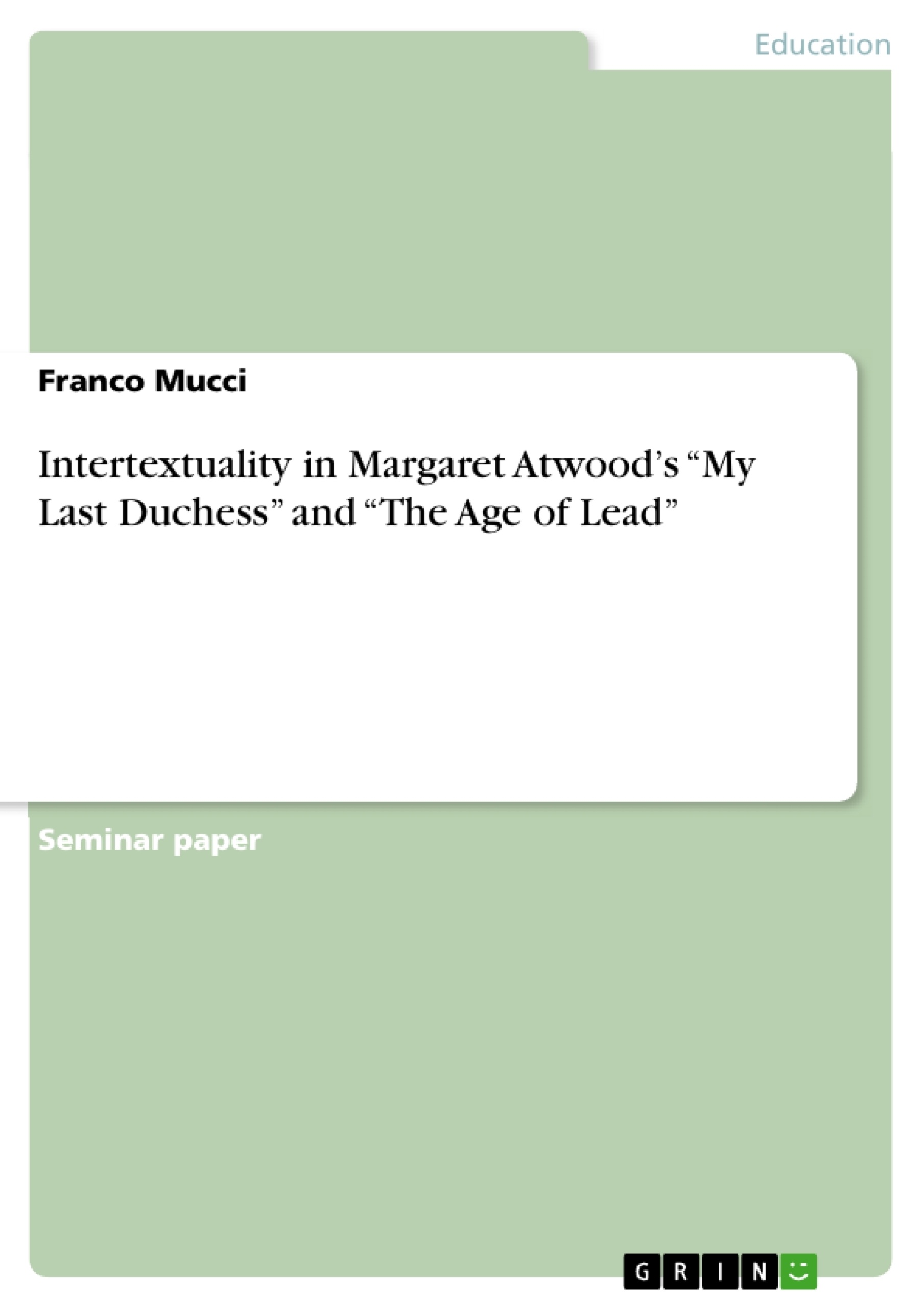This term paper introduces the reader to the world of Margaret Atwood, an internationally well-known Canadian author. She often uses myths and prominent works as a base for her own writings and concentrates on rewriting traditional or popular versions of stories, of which many undermine objectification or even refuse women (Wisker 2012: 67). It is striking how many times Atwood has used several texts within texts or intertexts throughout her career and thus it is worth having a closer look at it (Wilson 1993: 3).
In order to show how well Atwood is able to use intertextuality, the following chapter begins with Robert Browning’s dramatic monologue respectively poem ‘My Last Duchess’, which is essential for a better understanding of the intertextuality used in Atwood’s ‘My Last Duchess’ and important to finally understand the Duke’s and the Duchess’ role in both writings. The next chapter has a closer look at Atwood’s short story, published in a collection of connected short stories by her called ‘Moral Disorder’ in 2006, which “grapples with the complicated ethics of obligation, particularly the conflict between selfishness and sacrifice that can arise within the praxis of care” (DeFalco 2011: 236).
But many of the stories in the collection like ‘My Last Duchess’ also focus on the socialization of gender, a very central subject to Atwood, particularly the short stories set in the 1950s and 1960s, a time when gender was a principally discussed social issue (Wisker 2012: 165). In addition, as we will see in the short story ‘My Last Duchess’, Atwood regularly reverses the hero’s gender in order to alter the role of women from objects to subjects and she also doubles roles in order to make the same person look like a rescuer and a person being rescued (Wilson 1993: 32).
Inhaltsverzeichnis (Table of Contents)
- Introduction
- 'My Last Duchess' by Robert Browning
- 'My Last Duchess' by Margaret Atwood
- The Franklin Expedition
- 'The Age of Lead' by Margaret Atwood
- Conclusion
Zielsetzung und Themenschwerpunkte (Objectives and Key Themes)
This term paper explores the use of intertextuality in two short stories by Margaret Atwood, "My Last Duchess" and "The Age of Lead," and analyzes how Atwood reworks existing texts, including Robert Browning's dramatic monologue "My Last Duchess" and the historical event of the Franklin Expedition.
- The concept of intertextuality in Atwood's work
- The reworking of traditional narratives and myths in Atwood's writing
- The exploration of gender roles and societal expectations in Atwood's short stories
- The impact of historical events and cultural contexts on Atwood's fiction
- Atwood's ability to shift perspectives and portray characters struggling with internal and external conflicts.
Zusammenfassung der Kapitel (Chapter Summaries)
The paper begins by introducing the reader to the world of Margaret Atwood and her frequent use of intertextuality in her writing. It discusses the concept of intertextuality and how Atwood employs it to create unique and innovative narratives.
The second chapter focuses on Robert Browning's "My Last Duchess" and its role as a source for Atwood's short story of the same name. The chapter analyzes Browning's dramatic monologue and the character of the Duke, highlighting his psychological complexities and his revelations about his relationship with his late wife.
The following chapter examines Atwood's "My Last Duchess," analyzing how Atwood rewrites Browning's poem from a different perspective and explores themes of gender roles and societal expectations.
The paper then introduces the historical event of the Franklin Expedition, which served as inspiration for Atwood's "The Age of Lead." The chapter explores the context of this event and its significance for understanding Atwood's work.
The final chapter discusses Atwood's "The Age of Lead," analyzing how Atwood uses intertextuality to weave together the narrative of the Franklin Expedition with themes of environmental pollution and the complexities of human experience.
Schlüsselwörter (Keywords)
The primary keywords and focus topics of this term paper include intertextuality, Margaret Atwood, "My Last Duchess," Robert Browning, "The Age of Lead," Franklin Expedition, gender roles, societal expectations, historical events, cultural contexts, and narrative perspectives.
- Citation du texte
- Franco Mucci (Auteur), 2015, Intertextuality in Margaret Atwood’s “My Last Duchess” and “The Age of Lead”, Munich, GRIN Verlag, https://www.grin.com/document/310351



